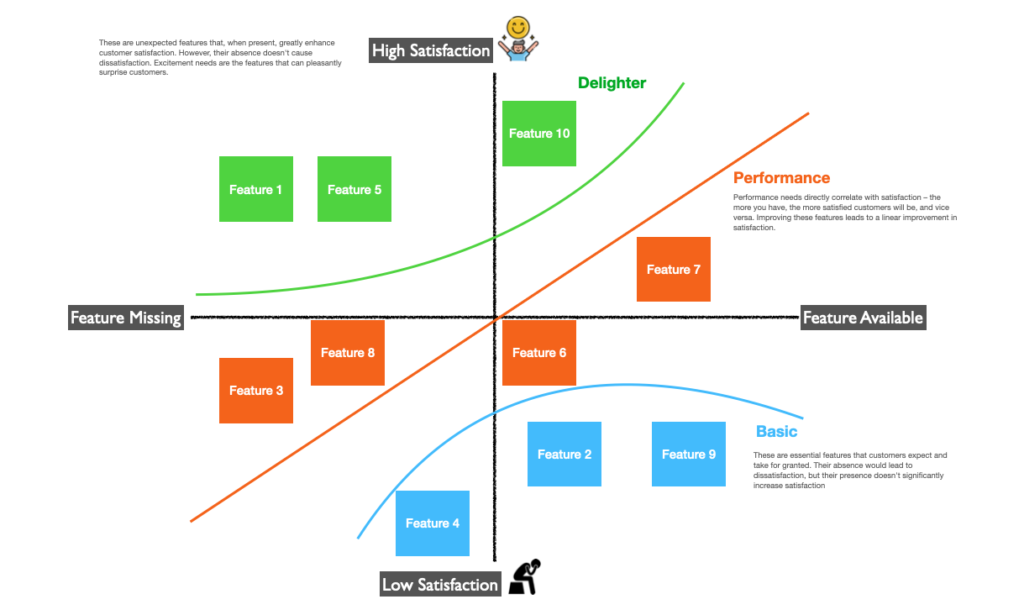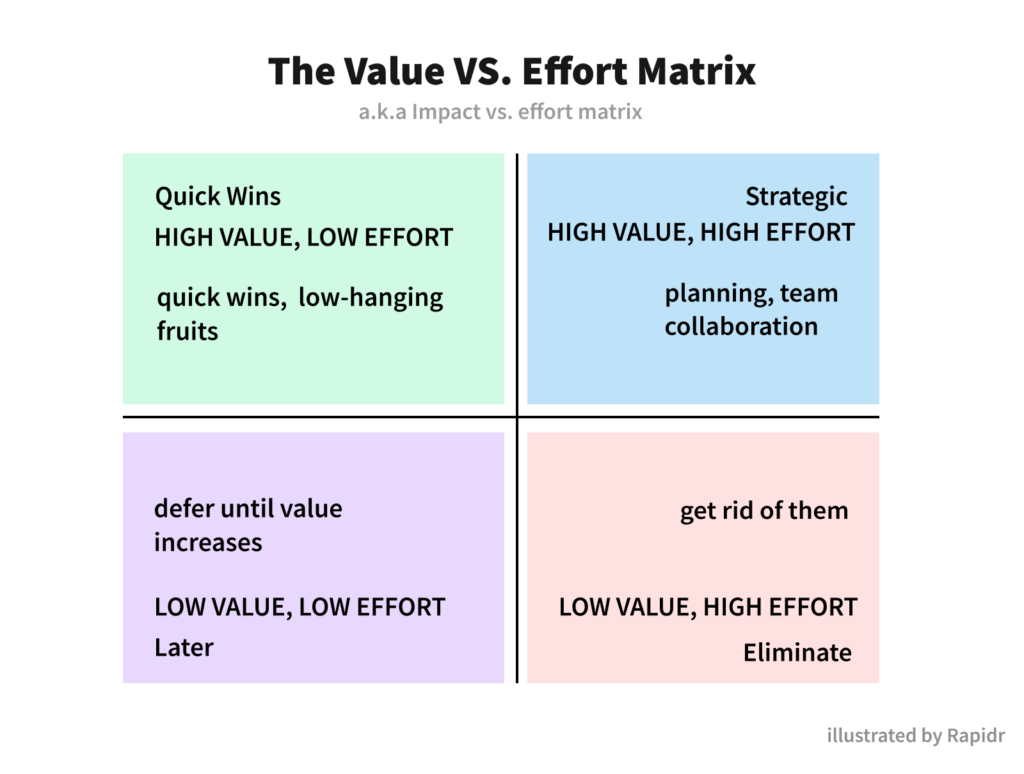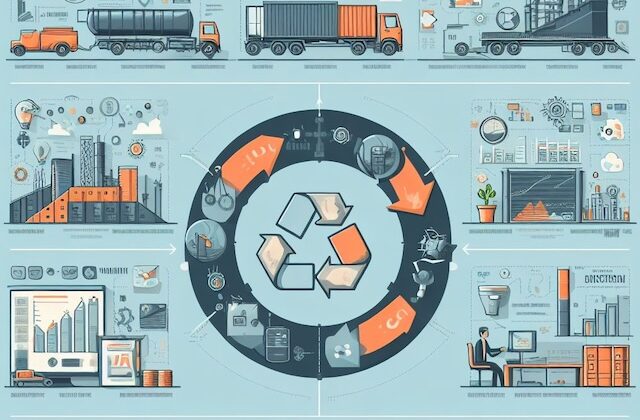
Prioritization
“Product managers must be the voice of the customer within their organization.”
– Ken Norton
Welcome to Day 07 of the PM series – Product Management in 30 days!
Product management is a juggling act. With limited time, resources, and an ever-growing list of demands, the ability to prioritize effectively is the secret sauce to success. In this extensive post, we’ll delve deep into the art and science of prioritization in product management, offering insights, strategies, and practical tips to help you make the right decisions and drive your product to greatness.
Learning Objectives:
- Importance of Prioritization: Understand the critical role of prioritization in product management.
- Factors Influencing Prioritization: Explore key factors to consider when deciding what to prioritize in product development.
- Prioritization Techniques and Tools: Familiarize yourself with various prioritization techniques such as the MoSCoW Method, Kano Model, Value vs. Effort Matrix, RICE Score, and Story Mapping.
- Implementing Prioritization: Learn practical tips for effective implementation, including iteration, collaboration, backlog maintenance, and data utilization.
- Challenges in Prioritization: Explore the influence of different stakeholders and their impact on decision-making.
Introduction
In the fast-paced world of product management, prioritization is the linchpin that holds everything together. It’s the process of deciding what to work on next, what to defer, and what to discard entirely. While it might sound straightforward, the reality is that it’s one of the most challenging aspects of the job.
Understanding the Need for Prioritization 🔥
Why is it so crucial in product management?
Imagine you’re tasked with building a product that needs to appeal to a diverse set of users. You have a laundry list of features and improvements, each backed by passionate stakeholders who believe their idea is the golden ticket to success.
Without prioritization, you’d be lost in a sea of competing demands, unable to make progress efficiently. Your resources would be stretched thin, and your product might lose focus, appealing to no one in particular.
The Product Manager’s Dilemma: What to Prioritize? 🤦♀️
As a product manager, you’re the ship’s captain, and prioritization is your compass. But what should you prioritize? Here’s a framework to guide your decisions:
[convertful id=”218861″]
1️⃣ Customer Value
- Start with the fundamental question: “Will this benefit our customers?” Prioritize features that address their pain points or fulfil unmet needs.
- Use techniques like user interviews, surveys, and data analysis to gain a deep understanding of customer needs and preferences.
2️⃣ Business Impact
- Assess how each potential feature or task aligns with your business goals and objectives.
- Consider factors like revenue potential, customer acquisition, retention, and market positioning.
3️⃣ Feasibility and Resources
- Evaluate the feasibility of implementing a feature. Can your team realistically deliver it within the given time frame and resources?
- Consider technical constraints, available skill sets, and development capacity.
4️⃣ Strategic Alignment
- Ensure that your prioritization aligns with your company’s broader strategic vision.
- Ask if the chosen initiatives support long-term growth and competitive advantage.
5️⃣ Risk Assessment
- Identify potential risks associated with each initiative, including technical, market, and organizational risks.
- Prioritize addressing high-impact risks early in the product development process.
Prioritization Techniques and Tools
Now that we’ve laid out the foundational principles, let’s explore some practical prioritization techniques and tools that can help you navigate the prioritization maze:
#️⃣ MoSCoW Method
The MoSCoW method is a prioritization technique used in product development. It helps teams categorize and prioritize requirements based on their importance. The acronym MoSCoW stands for:
Must-have, Should-have, Could-have, Won’t-have. This technique categorizes requirements into these four buckets, helping teams focus on must-haves first.

- Must-haves: Critical requirements that must be delivered for the project to be considered a success. These are non-negotiable and form the core functionality of the product.
- Should-haves: Important requirements that are not critical for the project’s success but provide significant value. These features are desirable and contribute to the overall project goals.
- Could-haves: Nice-to-have requirements that are not crucial and can be implemented if resources allow. These features add additional value but can be deprioritized if necessary.
- Won’t-haves: Requirements that are explicitly excluded from the current scope. These are intentionally left out of the project for various reasons, such as budget constraints or time limitations.
Example: Developing a Project Management Software
Must-haves:
- User authentication and authorization for secure access.
- Task creation, assignment, and tracking.
- Project timeline and milestone tracking.
Should-haves:
- Integration with third-party collaboration tools.
- Advanced reporting and analytics features.
- Mobile responsiveness for on-the-go access.
Could-haves:
- Gamification elements to encourage user engagement.
- Integration with popular project management methodologies (e.g., Agile, Scrum).
- In-app communication and collaboration features.
In real world, tools like Miro are used for collaborated working. You can check an example from here – https://miro.com/app/board/uXjVNHw14MA=/?share_link_id=321952911290
Won’t-haves:
- Social media integration (deemed unnecessary for the project’s scope).
- Virtual reality functionalities (considered too complex and resource-intensive).
#️⃣ Kano Model
The KANO model is a framework used in product management and development to prioritize and understand customer needs and expectations. Developed by Professor Noriaki Kano, this model categorizes features into different types based on their impact on customer satisfaction. There are five categories within the KANO model:

Basic Needs (Must-Have):
- These are essential features that customers expect and take for granted. Their absence would lead to dissatisfaction, but their presence doesn’t significantly increase satisfaction. Basic needs are considered fundamental for product functionality.
- Example: In a smartphone, the basic need is the ability to make and receive calls. Users expect this functionality, and its absence would result in significant dissatisfaction.
Performance Needs (Linear Satisfaction):
- Performance needs directly correlate with satisfaction – the more you have, the more satisfied customers will be, and vice versa. Improving these features leads to a linear improvement in satisfaction.
- Example: In a car, factors like fuel efficiency or speed fall into this category. The better these aspects perform, the more satisfied customers will be.
Excitement Needs (Delighters):
- These are unexpected features that, when present, greatly enhance customer satisfaction. However, their absence doesn’t cause dissatisfaction. Excitement needs are the features that can pleasantly surprise customers.
- Example: In a hotel, complimentary spa services would be an excitement need. Customers may not expect it, but if provided, it would greatly delight them.
The last two (mentioned below) do not significantly add to user satisfaction or dissatisfaction. Hence to simply the image, there are not shown on purpose.
Indifferent Needs:
- These are features that neither significantly contribute to satisfaction nor dissatisfaction. They are considered neutral and don’t heavily influence the customer’s perception of the product.
- Example: In a laptop, the color of the power cord may fall into this category. Most users likely don’t have strong feelings about it.
Reverse Needs (Must-Not-Have):
- Features that, if present, could lead to dissatisfaction, but their absence doesn’t necessarily lead to satisfaction. Identifying and avoiding these features is crucial to prevent negative customer reactions.
- Example: In a software application, frequent and intrusive pop-up ads could be considered a reverse need. Their presence could annoy users and result in dissatisfaction.
#️⃣ Value vs. Effort Matrix
The Value vs. Effort matrix in product management is a framework used to prioritize features or initiatives based on the value they deliver versus the effort required to implement them. It helps product teams focus on high-impact, low-effort items, maximizing efficiency and impact. Here’s a brief explanation with an example:

Value vs. Effort Matrix:
Value:
Represents the potential impact or benefit a feature or initiative brings to the users or the business. This can include increased revenue, improved user experience, market differentiation, or other strategic goals.
Effort:
Refers to the resources, time, and complexity involved in implementing a particular feature or initiative. It includes development time, design efforts, testing, and any other resources required for successful delivery.
Example:
Let’s consider a product team working on an e-commerce platform.
- High-Value, Low-Effort (Quick Wins): Implementing a streamlined checkout process that reduces friction for users. This could significantly increase conversion rates with relatively low development effort.
- High-Value, High-Effort (Strategic Investments): Introducing a personalized recommendation engine based on machine learning algorithms. While this has the potential for substantial user engagement and increased sales, it requires a significant investment in technology, data analysis, and development efforts.
- Low-Value, Low-Effort (Defer): Adding a small cosmetic feature, like changing button colors. This may not bring significant value but requires minimal effort.
- Low-Value, High-Effort (Avoid):Introducing a complex feature that caters to a niche audience with little impact on the broader user base. The effort involved may not justify the limited value it provides.
By using the Value vs. Effort model, the product team can strategically prioritize features. Quick wins can be addressed first to deliver immediate value, followed by strategic investments that may require more effort but offer substantial long-term benefits. This approach ensures that resources are allocated efficiently, maximizing the overall impact of the product.
#️⃣ RICE Score (Reach, Impact, Confidence, Effort)
RICE scoring is a prioritization framework commonly used in product management to evaluate and rank features or initiatives based on their potential impact. The RICE acronym stands for Reach, Impact, Confidence, and Effort. Here’s a brief explanation of each component:
Reach:
- Defines the number of users or customers who will be affected by the feature or initiative. It quantifies the scope and potential audience impacted by the proposed change.
- Example: If you’re considering a new feature for a widely-used app, the reach might be “All Users” or “Monthly Active Users.”
Impact:
- Measures the potential positive impact the feature or initiative can have on users or the business. It evaluates the magnitude of the change and its significance in achieving strategic goals.
- Example: Introducing a streamlined checkout process might have a high impact on user satisfaction and conversion rates.
Confidence:
- Represents the level of certainty or confidence that the team has in the estimates for reach and impact. It accounts for the availability of data, research, or past experiences that support the expected outcomes.
- Example: If extensive user testing and market research have been conducted, confidence in the estimates would be high.
Effort:
- Quantifies the resources, time, and complexity required to implement the feature or initiative. It considers factors such as development time, design complexity, and potential dependencies.
- Example: Building a new feature from scratch might have a higher effort compared to making small improvements to an existing one.
Calculation:
The RICE score is calculated using the formula:
RICE = (Reach × Impact × Confidence) / Effort.
Example:
Let’s say you’re evaluating two features:
- Feature A has a reach of 1 million users, an impact of 5 (on a scale of 1 to 10), confidence of 80%, and an effort of 3.
- Feature B has a reach of 500,000 users, an impact of 8, confidence of 60%, and an effort of 5.
Calculating the RICE scores:
- RICE for Feature A = (1,000,000 × 5 × 0.8) / 3 = 1,333,333.33
- RICE for Feature B = (500,000 × 8 × 0.6) / 5 = 480,000
In this scenario, Feature A has a higher RICE score, indicating that it should be prioritized over Feature B based on the overall potential impact considering reach, impact, confidence, and effort.
For practical use, checkout this link that provides a simple table to imagine how product managers use RICE scoring model – https://docs.google.com/spreadsheets/d/13gagLV-a7BSh6ikoqjB0CciKN11DaH__7_aA-YV3w_s/edit?usp=sharing
#️⃣ Story Mapping
User story mapping is a visual tool used in product management to prioritize and organize features based on user needs and business goals. It involves creating a visual representation of the user journey and the corresponding features, allowing teams to prioritize tasks more effectively.
Here’s a short explanation of how user story mapping works :
Define User Personas and Goals: Identify the key user personas and their goals. For example, in a project management tool, personas might include project managers, team members, and stakeholders with goals such as task tracking and progress visibility.
Break Down User Activities: Decompose user activities into smaller tasks or user stories. For instance, in the project management tool, user stories could include creating tasks, assigning team members, setting deadlines, and monitoring project progress.
Create a User Story Map: Arrange the user stories on a horizontal axis based on the sequence of user activities. Place the essential and core features towards the top and more supplementary features towards the bottom.
Prioritize and Define Releases: Prioritize the user stories based on business value, user impact, or other relevant criteria. Group user stories into releases or iterations, defining what features will be included in each release.
Download this ebook (credit: unknown source) that gives a very good understanding on how to do user story mapping with example
Putting Prioritization into Action 👨💻
Prioritization isn’t a one-time task; it’s an ongoing process. Here are some tips to help you put prioritization into action effectively:
- Iterate and Reevaluate: Priorities can change as the market evolves or new data becomes available. Regularly revisit your prioritization decisions and adapt as needed.
- Collaborate and Communicate: Involve cross-functional teams, stakeholders, and users in the prioritization process. Collaborative decision-making often leads to better outcomes and buy-in.
- Maintain a Backlog: Maintain a well-organized backlog of features, ideas, and tasks. Keep it up to date and ready for prioritization discussions.
- Use Data Wisely: Leverage data and analytics to inform your prioritization decisions. A/B testing, user feedback, and usage metrics can provide valuable insights.
Prioritization Challenges
While there are multiple frameworks that are super helpful in prioritization, the decision of which one to choose depends on multiple factors which you learned above. However, the reality is a bit more complex than it looks on paper! In the corporate world, there are a set of people who influence the prioritization owing to their position and needs. They are known as Dangerous animals of Product management. Look at the graphics below to get a high-level understanding. This is best when experienced!

🔔 Conclusion
Prioritization is the heartbeat of successful product management. It’s the guiding force that ensures you’re building the right things at the right time for the right audience. Mastering the art of prioritization requires a blend of customer empathy, strategic thinking, and data-driven decision-making. It’s a skill that evolves with experience and continuous learning.
So, as you embark on your product management journey, remember that prioritization is not just a process; it’s your superpower. It’s the compass that will guide you through the turbulent waters of product development, helping you navigate with confidence and steer your product toward success.
Quiz Time:
Why is prioritization crucial in product management?
A. To create a long list of features.
B. To make progress efficiently and focus resources.
C. To appease passionate stakeholders.
D. To delay decision-making.
What is the primary consideration in the “Customer Value” aspect of prioritization?
A. Technical constraints
B. Business impact
C. Alignment with strategic vision
D. Benefit to customers
Which prioritization technique involves categorizing requirements into Must-have, Should-have, Could-have, and Won’t-have?
A. Kano Model
B. RICE Score
C. Story Mapping
D. MoSCoW Method
What is the purpose of the RICE Score in prioritization?
A. Categorizing features into quadrants.
B. Assessing the reach, impact, confidence, and effort of initiatives.
C. Plotting user journeys.
D. Identifying dangerous animals in product management.
Why is maintaining a well-organized backlog important in prioritization?
A. To showcase all available features.
B. To create confusion among team members.
C. To keep stakeholders happy.
D. To be prepared for prioritization discussions.
✍️ Write your answers in the comment section. e.g 1-a, 2-b, 3-c etc.
If you want to learn more about product management, you can also find other posts. The Full series is available here
One of the recommended books to learn about product management is The MOM Test by Rob
💌 Do drop me a comment below if you found the content useful and/or want me to write on a specific topic. This will make my day! 🙂
Also, share the post if you think this might help someone. The sharing link is at the top of the page.
Join FreeMentor as a student if you are a newbie in product management and want to have one Free 1:1 mentorship session.
Disclaimer:
Please note that I don’t make any guarantees about the information supplied in this post. I share educational and informational resources that are intended to help you succeed in understanding product management. You nevertheless need to know that your ultimate success or failure will be the result of your own efforts, your particular situation, and innumerable other circumstances beyond my knowledge and control.
#ProductManagement #Prioritization #ProductDevelopment #ProductStrategy #BusinessStrategy #LinkedInPost #ProductManager

